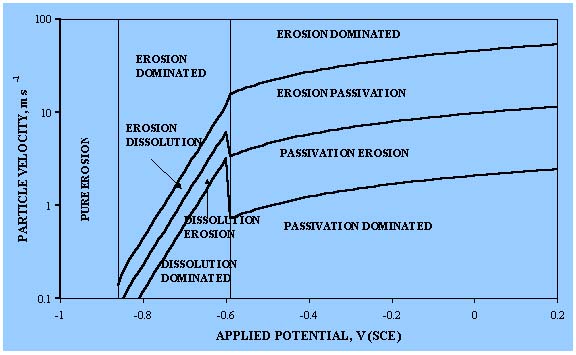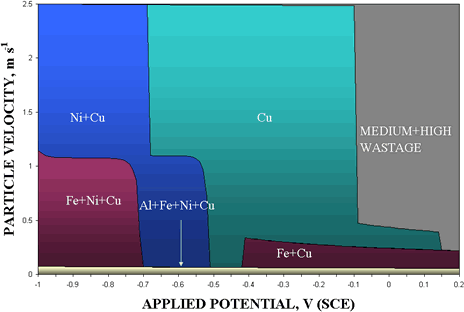|
Modelling research
The
department has a long history of expertise in mathematical
modelling of solid particle erosion and one of the most
well known models developed in the 1960s -that of Neilson
and Gilchrist-was the work of two former members of
academic staff in the department, one of whom (Alistair
Gilchrist) retired in 2001. This work continues
today. Finite element models are being developed
to predict the complex effects of component geometry on
erosion in flowing conditions. Research is also being carried
out on the development of predictive models of erosion/
wear in corrosive conditions to generate mechanistic
maps of the process. These are important engineering
tools which are designed to avoid the deleterious effects
of tribo-corrosion. This group has established a lead
in this area and is responsible for much of the recent
developments in modelling and mapping of erosion-corrosion
processes and have developed 2-D and 3-D maps for such processes.

Erosion-corrosion mechanism map for
Fe at 90 Degrees at pH 7 developed from
mathematical models. Regimes
of erosion-corrosion are based on the ratios
of the
erosion to corrosion contributions.

Erosion-corrosion wastage map for
Fe at 90 degrees at pH 7.

Material performance map at 90 degrees
at pH 7 for erosion-corrosion resistance
developed from mathematical models

3-D erosion-corrosion maps for a pipe bend developed from mathematical models showing the
effects of increasing particle concentration on the regime boundaries
|